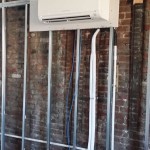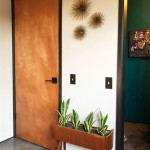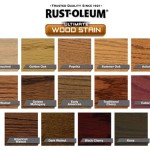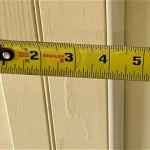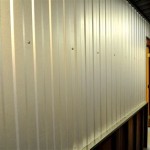How Much Does It Cost To Remove And Replace An Interior Door?
Replacing an interior door is a common home improvement project that can enhance both the functionality and aesthetics of a living space. The cost associated with this project can vary significantly depending on a number of factors, including the type of door, the complexity of the installation, and the geographical location. Understanding these contributing elements is crucial for budgeting accurately and ensuring a smooth and satisfactory outcome.
This article will explore the various aspects of the cost of removing and replacing an interior door, breaking down the individual expenses and providing insight into how to make informed decisions regarding materials, labor, and potential additional costs. By examining these factors, homeowners can gain a clearer understanding of the financial implications of this project and plan accordingly.
Door Type and Material Costs
The primary factor influencing the overall cost is the type of door being installed. Interior doors come in a wide range of materials, styles, and constructions, each with its own price point. Hollow-core doors are the most budget-friendly option. These doors are lightweight and typically made with a honeycomb core covered by a thin veneer. They are suitable for areas where sound insulation and security are not major concerns.
Solid-core doors, on the other hand, offer superior soundproofing and a more substantial feel. They are constructed with a solid core, often made from wood fibers or composite materials, and are typically more expensive than hollow-core doors. Their added density and rigidity also make them more durable and resistant to damage. Solid wood doors represent the highest price point in terms of material cost. Crafted from solid lumber, these doors offer exceptional beauty and longevity. They can be made from a variety of wood species, such as oak, maple, or pine, each with its own unique grain pattern and color. Solid wood doors can be particularly desirable for historical homes or those seeking a more traditional aesthetic.
Beyond the core material, the style of the door also impacts the price. Standard slab doors, which are simple, unadorned doors, are generally the least expensive. Pre-hung doors, which come already mounted in a frame, are more costly but offer easier installation, especially for DIYers or those who want to avoid the complexities of aligning the door within the frame. French doors, with their glass panels, can add a touch of elegance but require more intricate construction and therefore carry a higher price. Pocket doors, which slide into a wall cavity, require specialized hardware and installation, making them a more expensive option. The cost of hardware, such as doorknobs, hinges, and strike plates, also needs to be considered. Basic hardware sets are relatively inexpensive, but higher-end finishes and styles can significantly increase the overall cost. Specific features, such as privacy locks for bedroom or bathroom doors, or keyed locks for added security, will also add to the expense. Typically, expect to pay between $50 to $500 for the door itself, depending on the material and style. Add another $20 to $100 for the necessary hardware.
Labor Costs and Installation Complexity
Labor costs represent a significant portion of the total expense of removing and replacing an interior door. Hiring a professional carpenter or handyman can ensure proper installation and avoid potential issues down the line. The cost of labor can vary depending on the geographical location, the experience of the installer, and the complexity of the job.
The complexity of the installation is a crucial factor in determining labor costs. A simple replacement of an existing door with a pre-hung door is generally a straightforward process and will require less time and expertise. However, if the door frame is damaged or out of square, more extensive work may be needed to ensure a proper fit. This could involve shimming, planing, or even rebuilding parts of the frame, which will increase the labor costs.
Installing a new door in a location where one did not previously exist is a more complex project that requires framing the opening and creating a new door jamb. This will involve more time and specialized skills, resulting in higher labor charges. Tasks like rerouting electrical wiring or moving plumbing, while rare, can inflate costs dramatically. Pocket door installations require specialized carpentry skills and can be significantly more expensive than standard door replacements. The removal of the old door also contributes to the labor costs. If the old door is heavily damaged or difficult to remove, it may require additional time and effort. Furthermore, disposal of the old door may incur additional fees, depending on local regulations and waste disposal practices.
On average, expect to pay between $150 to $500 in labor costs for a standard interior door replacement. This can increase significantly depending on the factors previously mentioned, so it's always wise to get multiple quotes from different contractors to compare prices and services. It's important to clarify what is included in the quote, such as the removal of the old door, disposal fees, and any necessary repairs to the frame or surrounding wall. Always ensure the contractor possesses the necessary licenses and insurance to protect yourself from liability in case of accidents or damages during the work.
Additional Costs and Considerations
Beyond the door material and labor costs, there are several other potential expenses to consider when budgeting for an interior door replacement project. These additional costs can add up quickly and should be factored into the overall budget to avoid unexpected financial burdens.
One common additional cost is for painting or finishing the door. While some doors come pre-finished, others require painting or staining to match the existing decor or to provide protection from moisture. The cost of painting will depend on the type of paint used, the number of coats required, and the size of the door. Staining, on the other hand, requires more skill and time and can be more expensive than painting. If the door frame also needs to be painted or touched up, this will add to the overall cost. Matching the existing paint color can sometimes require professional color matching, which may incur an additional fee.
Another potential expense is for any necessary repairs to the surrounding wall or trim. During the removal of the old door, it is possible to damage the drywall or trim around the door frame. These repairs may require patching, sanding, and painting, which can add to the overall cost. If the existing trim is outdated or damaged, it may be necessary to replace it entirely, which will involve additional material and labor costs. In older homes, there may be hidden structural issues, such as rotting wood or termite damage, which need to be addressed before the new door can be installed. These repairs can significantly increase the overall cost of the project.
Homeowners should also consider the cost of permits, if required by their local building codes. Some municipalities require permits for door replacements, especially if the project involves structural changes or modifications to the door frame. Failure to obtain the necessary permits can result in fines and delays. Finally, consider the cost of contingencies. It's always wise to set aside a contingency fund to cover unexpected expenses that may arise during the project. This could include unforeseen repairs, changes in the scope of work, or increases in material costs. A contingency fund of 10-15% of the total project cost is generally recommended. Expect to pay $50 to $200 for painting/finishing. Damaged trim work may cost $20 to $500 to repair or replace, depending on the amount of trim work and complexity.
Therefore, when planning to remove and replace an interior door, it is critical to account for all possible costs, including the door itself, labor, painting, potential repairs, permits, and contingencies. By carefully assessing these factors, homeowners can develop a realistic budget and avoid any unexpected financial surprises. Obtaining multiple quotes from qualified contractors and thoroughly researching the various door options available will help ensure a successful and cost-effective project. Remember that cheaper is not always better. Investing in quality materials and professional installation can save money in the long run by preventing future repairs and extending the lifespan of the door.

Door Installation Cost Guide Interior Exterior Mr Handyman

What Is The Cost To Replace A Door Frame In 2025 Checkatrade

Internal Door Fitting Cost In 2025 Fitters Checkatrade

Internal Door Fitting Cost In

Replacing An Interior Door Rogue Engineer

Cost To Replace Door Frame Angi

Internal Door Fitting Cost In

How Much Does Interior Door Installation Cost 2025 Data Angi

Door And Frame Replacement Costs In 2025 Factors Ways To Save Taskrabbit Blog

Internal Door Fitting Cost In
Related Posts


